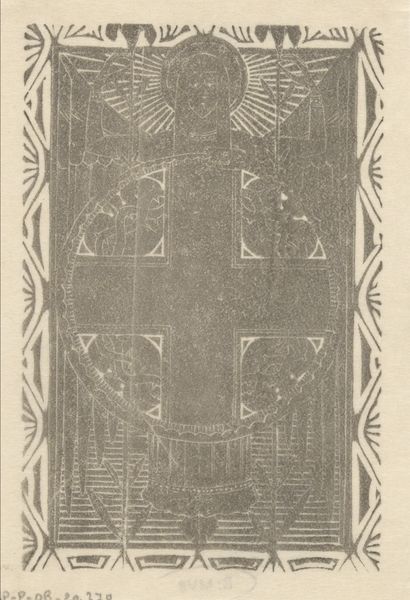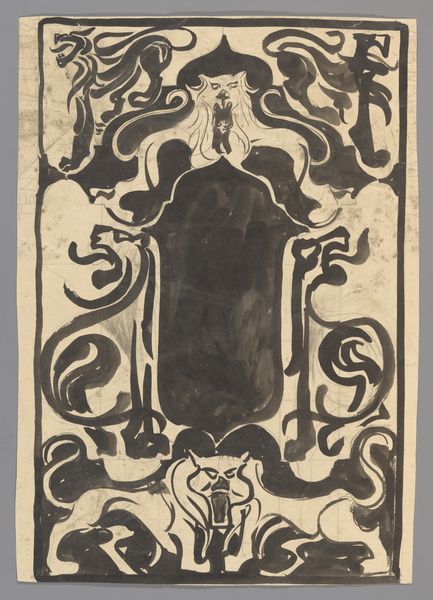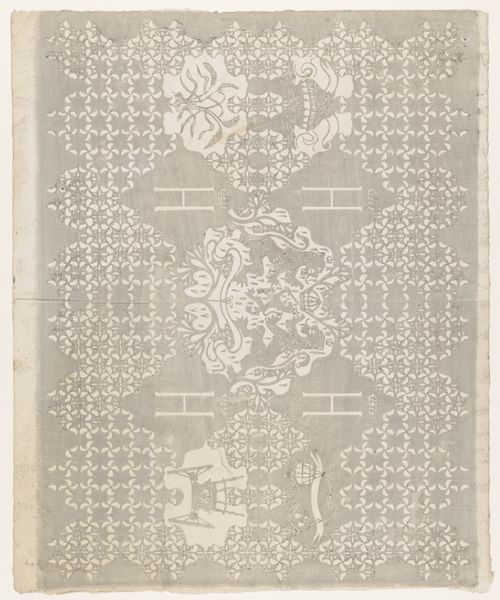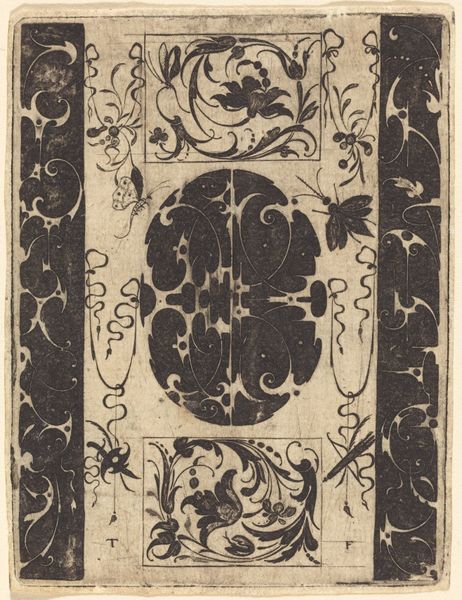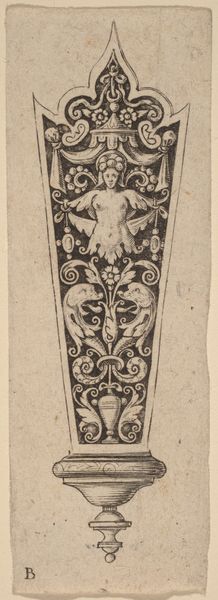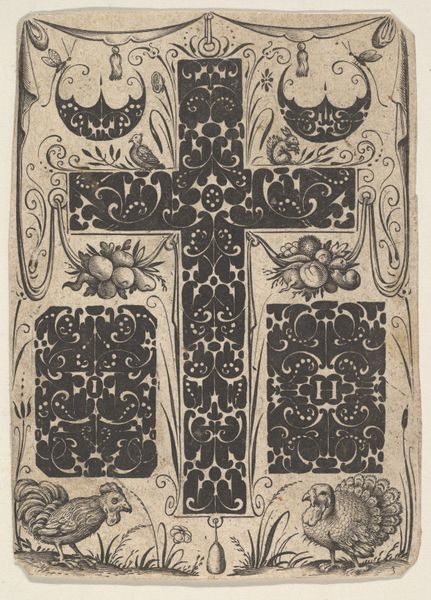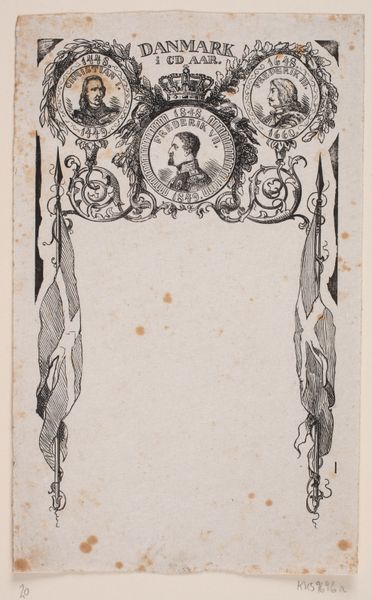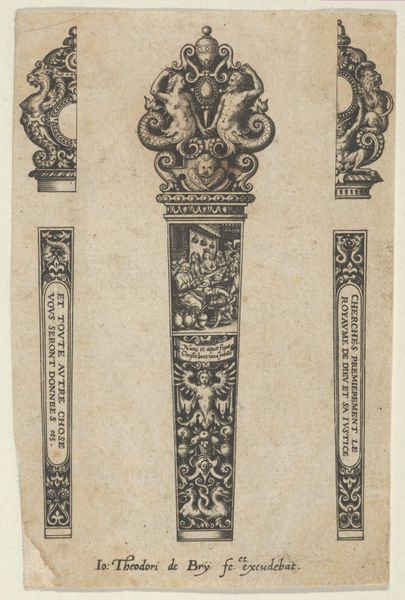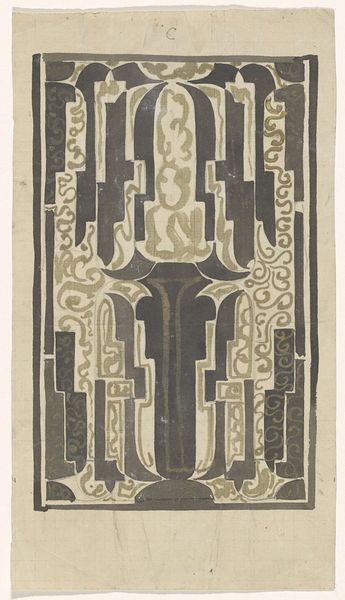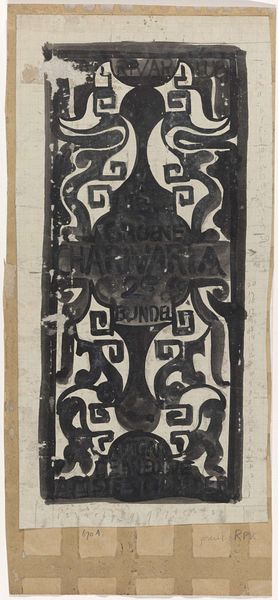
graphic-art, print, woodcut
#
graphic-art
#
art-nouveau
#
pen drawing
# print
#
form
#
geometric
#
woodcut
#
line
#
pen work
Dimensions: height 207 mm, width 167 mm
Copyright: Rijks Museum: Open Domain
Editor: Here we have "Decoratief ontwerp," a decorative design made sometime between 1874 and 1945 by Carel Adolph Lion Cachet, using woodcut, pen drawing, and other graphic arts techniques. The stark black and white is really striking! How do you interpret this work? Curator: It is more than striking. It's a bold visual statement! Knowing this piece emerged during a period of immense social and political change, where does its visual language situate itself in that turmoil? Think about the rise of industrialization, of mass production, and how art responded. Editor: It's an interesting point. The sharp lines and geometric shapes evoke the machine age, yet the flowing organic forms of Art Nouveau soften it, so maybe it’s a bridge? What were Cachet's motivations in creating it, do you think? Curator: Perhaps a desire to reconcile the hand-made and the machine-made, something so many artists grappled with at that time. How might we view this design as a negotiation – maybe even a confrontation – between tradition and modernity, class and power? And whose traditions, and which versions of modernity are prioritized here? Editor: So you see it as a commentary on society as it modernized? Curator: Exactly! Consider the visual tension inherent in this work. The constraints imposed by a traditionally hierarchical society pushed for change in artistic and social expression. How are form and function being subverted or redefined here? Where does it challenge conventional perspectives? Editor: This definitely provides a different way to look at the piece. It is much more than a decorative design; it reflects significant social commentary. Curator: Precisely! And by understanding its context, we can appreciate how radical a ‘mere’ design could be.
Comments
No comments
Be the first to comment and join the conversation on the ultimate creative platform.
